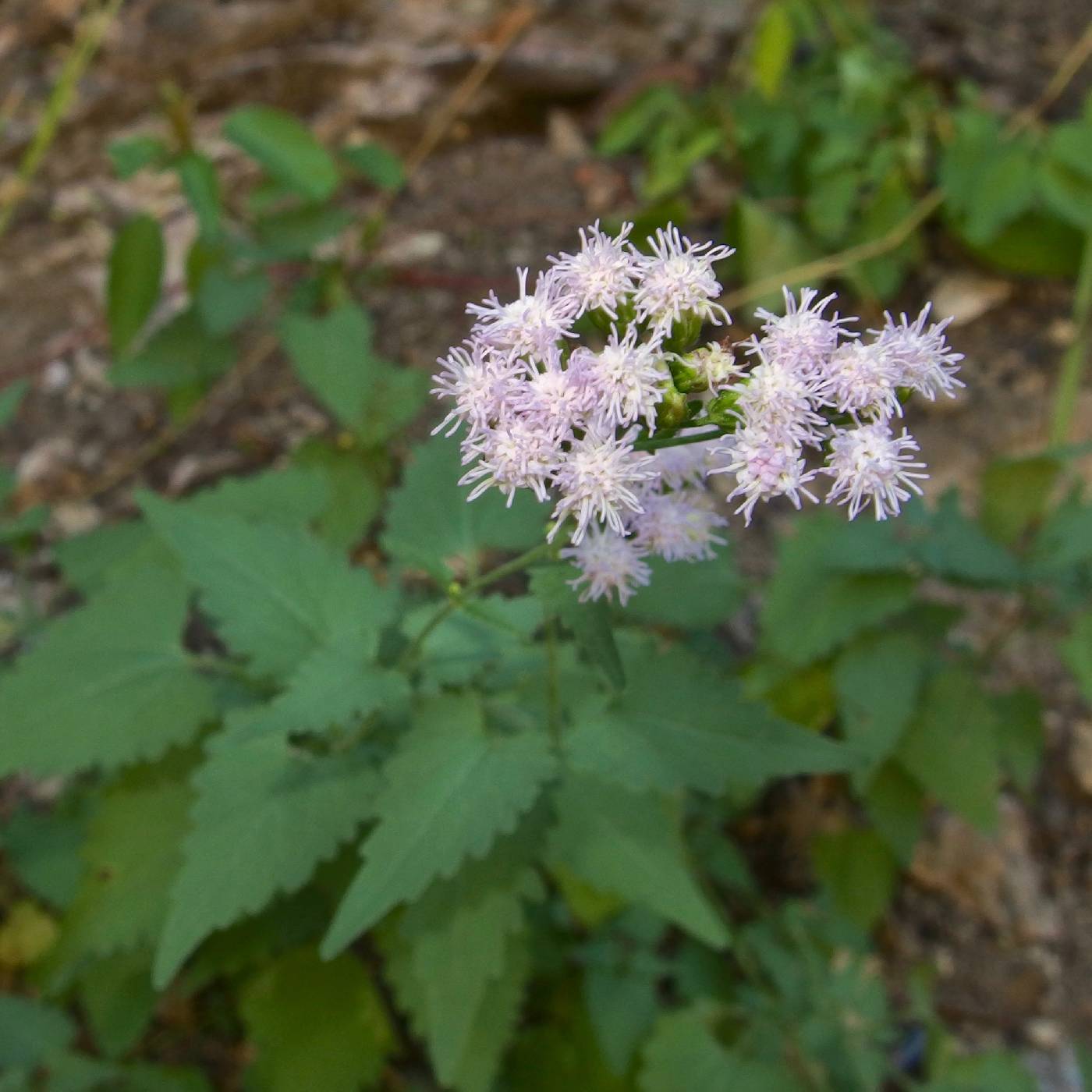
|
Family: Asteraceae |
Annuals or perennials [subshrubs], 30-120+ cm (crowns fibrous-rooted). Stems erect, simple or sparingly branched (usually puberulent, hairs curled). Leaves cauline; opposite [alternate]; petiolate; blades 3-nerved, deltate-ovate or triangular-deltate [elliptic, rhombic], margins ± crenate to serrate, faces glabrous, sometimes gland-dotted. Heads discoid, in loose, corymbiform arrays. Involucres obconic to hemispheric, 2-4 mm diam. Phyllaries persistent, 20-30 in 2-4 series, 2-3-nerved, lanceolate to linear, unequal [subequal] (herbaceous to chartaceous). Receptacles flat or slightly convex [conic] (glabrous or with scattered hairs), epaleate. Florets 15-25 [10-50]; corollas bluish, pinkish, purplish, or white, throats narrowly funnelform (lengths 2.5-4 times diams.); styles: bases not enlarged, glabrous, branches linear-filiform. Cypselae prismatic, 5(-8)-ribbed, glabrous or sparsely hirtellous; pappi ± persistent or fragile, of [0 or 5-]20-40, barbellate bristles in 1 series. x = (4) 10. Fleischmannia is 'superficially similar to Ageratina, which is distinguished from it by the less well developed carpopodium (not stopper-like and sharply set off from the body as in Fleischmannia), usually imbricate involucral bracts, and base chromosome number of x = 17 (versus 4 or 10 in Fleischmannia)' (R. M. King and H. Robinson 1987).
|
This project was made possible in part by the Institute of Museum and Library Services [MG-70-19-0057-19].
Powered by Symbiota



